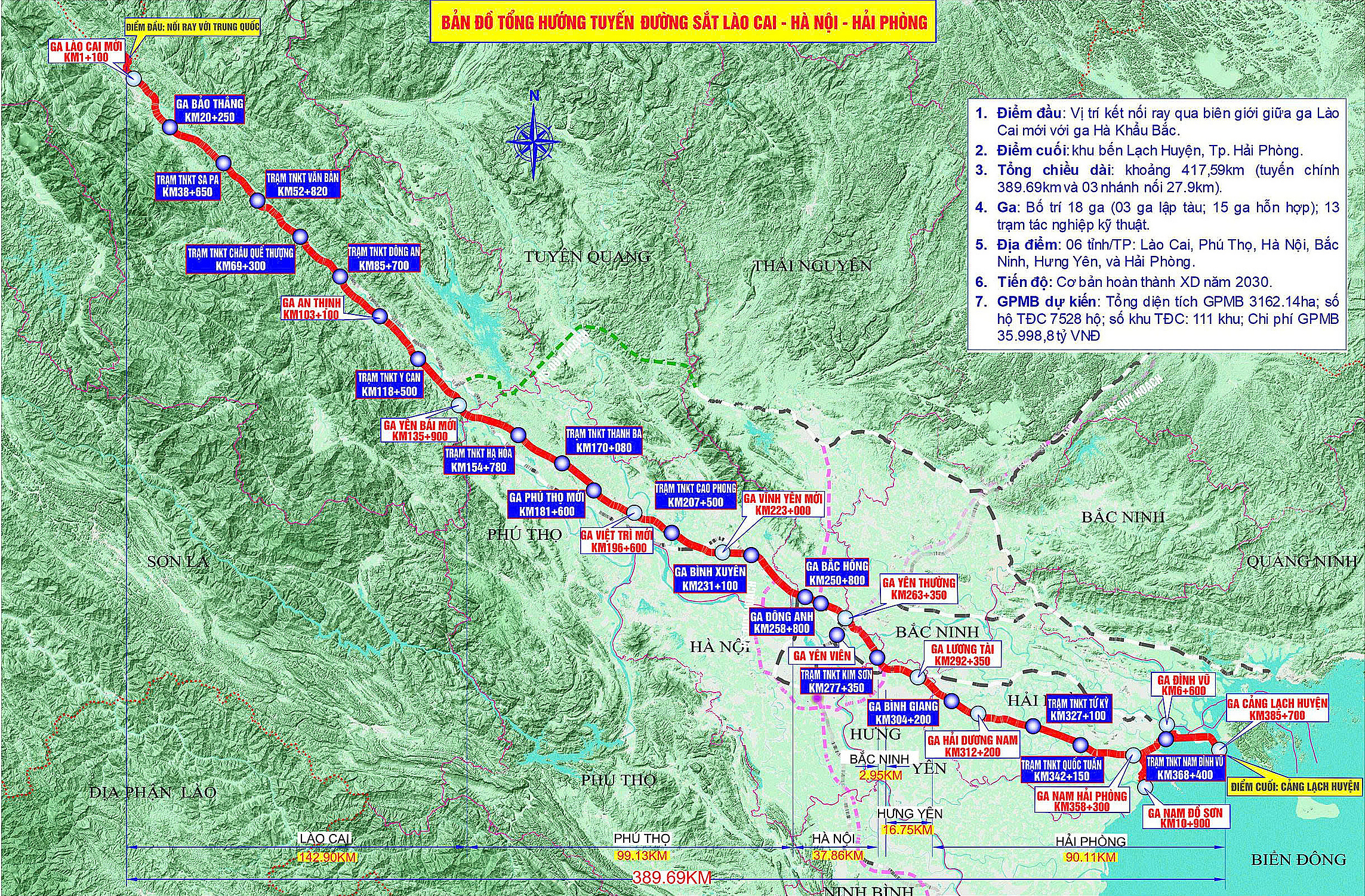Mai Minh Viet, deputy director of the Railway Project Management Board (Ministry of Construction), stated on 11/9 that the Lao Cai - Hanoi - Hai Phong project comprises 10 sub-projects. Seven of these involve land clearance across six provinces and cities, requiring the relocation of technical infrastructure on 3,162 hectares. This relocation will affect over 7,500 households, necessitating the construction of over 110 resettlement areas. The cost of land clearance is nearly 36,000 billion VND.
Consultants are currently reviewing and updating the route and station locations to hand over land clearance boundaries to local authorities. This will allow them to conduct surveys, develop compensation and support plans, and manage resettlement.
Four provinces and cities—Lao Cai, Phu Tho, Hung Yen, and Hai Phong—have completed surveying and updating cadastral maps. Hanoi and Bac Ninh are currently working on this to facilitate land clearance.
Lao Cai, Phu Tho, and Hai Phong are investing in the construction of approximately 109 resettlement areas, with 86 expected to begin construction in December.
Vietnam Electricity (EVN) has compiled a list of electrical works requiring relocation, including 63 high-voltage installations of 110kV or higher and 469 installations below 110kV.
 |
Route of the Lao Cai - Hanoi - Hai Phong railway project through six provinces and cities. Photo: Railway Project Management Board. |
Route of the Lao Cai - Hanoi - Hai Phong railway project through six provinces and cities. Photo: Railway Project Management Board.
The remaining two sub-projects focus on connecting infrastructure to stations for seamless road-rail transfers and freight consolidation. Design work for this component is underway, with all contract packages scheduled to commence simultaneously on 19/12/2025.
The final sub-project, the construction of the 417 km railway itself, is expected to begin at the end of 2026. This project is currently in the feasibility study stage, utilizing non-refundable aid from the Chinese government.
Viet emphasized the scale of the Lao Cai - Hanoi - Hai Phong railway, noting its new technology and the limited domestic experience with such projects. Global experience suggests that similar projects require 36 to 42 months of preparation. Meeting the late 2025 start date presents a significant challenge, requiring system-wide political engagement and specific policies.
"Shortening the preparation time may hinder our ability to fully assess and manage technical and economic risks during implementation," Viet said.
The Railway Project Management Board urges ministries, sectors, and localities to expedite review, appraisal, and approval processes. They also request that localities and EVN accelerate land clearance and infrastructure relocation to ensure timely handover of cleared sites.
According to National Assembly Resolution 187/2025, the approximately 419 km Lao Cai - Hanoi - Hai Phong railway project has a total investment of 203,231 billion VND (8.37 billion USD). Construction is set to begin in 2025, with completion targeted for 2030.
The project starts at the border crossing in Lao Cai province and ends at Lach Huyen station in Hai Phong, spanning 417 km. The main line covers 389 km, with a 27.9 km branch line, traversing six provinces and cities: Lao Cai, Phu Tho, Hanoi, Bac Ninh, Hung Yen, and Hai Phong. The new single-track railway, with a standard gauge of 1,435 m, will accommodate both passenger and freight transport at a design speed of 160 km/h.
Upon operation, the railway is projected to handle around 21 million tons of cargo and 14 million passengers annually. It will serve the Lao Cai - Hanoi - Hai Phong economic corridor, boosting trade and expanding import-export activities between Vietnam, China, and other countries.
The railway is also expected to alleviate road traffic congestion and reduce accident risks. The project will create approximately 90,000 jobs during construction and around 2,500 permanent jobs during operation.
Doan Loan












